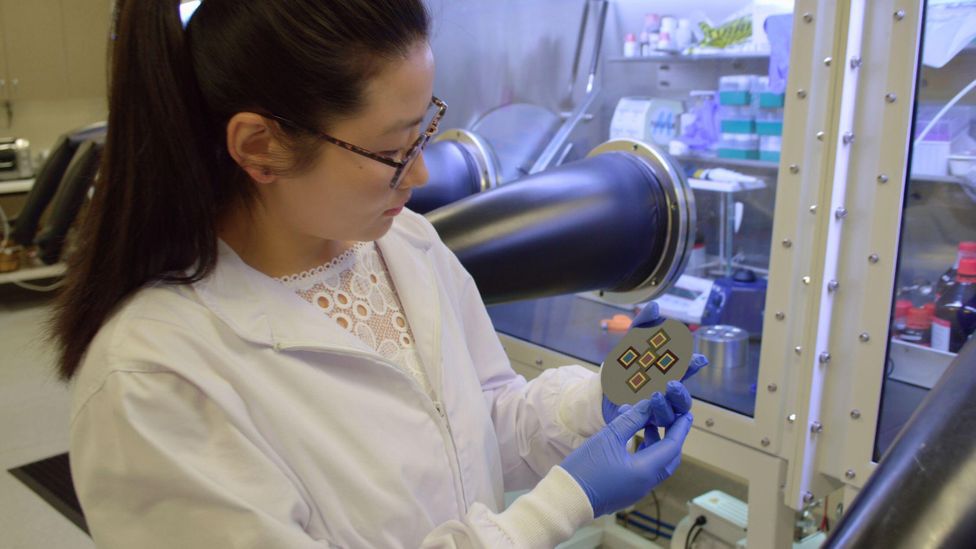From fizzy drinks to moreish crisps, many inventions are famed for their unusual and often closely guarded ingredients – but solar panels aren't usually found at the top of that list. However, several food ingredients have proved to be unexpectedly useful when added to solar cells.
Depending on what you like to eat, there's a good chance you can find at least one of them at home. Capsaicin, the chemical that gives chili peppers their spicy sting, has been found to improve perovskite solar cells – the devices that make up solar panels.
Adding capsaicin expands the grains which make up the active material of the solar cell, allowing it to more effectively transport electricity. More importantly, the material goes from having a deficit of electrons to having an excess, which changes how the cell operates and allows more sunlight to be converted to electricity. In essence, adding capsaicin adds electrons (which may or may not be the same effect you experience on your tongue after a particularly spicy biryani).
The capsaicin-laced cells are among the most efficient that have been reported. Rather than a gimmick to grab headlines, adding this chemical from chili peppers may actually be a route to improving the performance of solar cells.
But why would you think to add chili peppers to a solar panel in the first place? Unfortunately, the researchers didn't share their thought process. But I happen to have form in this area too.
You might also like:
- The new 'gold rush' for green lithium
- The batteries that could make power stations obsolete
- Why some bike shares work and others don't
In 2014, I published a paper demonstrating how a compound called magnesium chloride could dramatically reduce the cost of solar energy, albeit in a different type of solar cell. Haven't heard of magnesium chloride? Well if you're vegan, you've probably consumed it at one time or another.
It's a salt not too dissimilar to table salt (sodium chloride) and it can be recovered from sea water. It has many uses, but one of its most popular is in Japanese cooking, where it's known as nigari and used as the coagulant for thickening tofu. My findings led to some media coverage of "tofu solar", which was fun, and me getting called “tofu boy” at academic conferences (less fun).

A popular ingredient in Japanese cooking, nigari, has also shown promise in making solar cells work better – and it tastes good too (Credit: Alamy)
Does this mean food chemicals transfer particularly well to solar cell research? Not really. The coincidence has more to do with the overlap between food and chemistry and the "what if" approach that guides a lot of materials scientists.
You might think that most solar cell research is done by physicists. This is partly true – I'm one myself – but the research approach has little in common with work done by particle physicists at the large hadron collider, or cosmological research. Those fields generally revolve around heavy computation and theory work. In other words, a lot of time staring at blackboards.
Solar cell research is really a matter of materials science, which sits somewhere between physics and chemistry. The development of new solar cell technologies or processes is very labour-intensive, and the typical approach is to spend a great deal of time testing the performance of a large number of comparable but slightly altered cell designs. Solar cells are comprised of stacked layers of different materials, and it's hard to predict what will happen to the performance of the entire structure by changing one component.
If I add something to layer A and it changes, then layers B, C and D on top of it will probably change as well. Similarly, if I change layer C, will I need to change how I made A or B? And what will then happen to D? You can probably get a sense of how hard this would be to predict, and this feeds the curiosity behind much of the innovation in this field.

We shouldn't be surprised if more compounds found in food make their way into solar cells in future, as they are often organic compounds with useful properties (Credit: Alamy)
Think of solar cells like cake. To find out what will happen when you add a novel ingredient, it's far more reliable to bake it and then sample the final concoction than to try to predict what it will look and taste like before you bake it.
In the end, the food we eat, just like solar cells, is a mix of compounds. While we know capsaicin from chili, it's really just an organic compound, which, coincidentally, has particular properties that make it suitable for solar cell processing – as well as for spicing up a fajita.
For my own part, I had developed the process of using magnesium chloride and only later found out when I came to write the paper that it was used in tofu. I wasn't inspired in the vegan food aisle, sadly. So, these approaches are not as weird and wacky as they sound when you first read about them. There is usually some initial logic that's based on the inherent chemistry of these compounds, and these flights of scientific fancy are often what leads to interesting breakthroughs.
So, if in the near future you read an article about solar cells improved immeasurably by adding nutmeg or something, trust that it's been done as a result of informed curiosity of the likely effect, rather than boredom and a looming best-before date.
--
Jon Major is a physics research fellow at the University of Liverpool's Stephenson Institute for Renewable Energy, where he studies solar cell fabrication and characterisation. This article originally appeared on The Conversation, and is republished under a Creative Commons licence. This is also why this story does not have an estimate for its carbon emissions, as Future Planet stories usually do.
--
Join one million Future fans by liking us on Facebook, or follow us on Twitter or Instagram.
If you liked this story, sign up for the weekly bbc.com features newsletter, called "The Essential List". A handpicked selection of stories from BBC Future, Culture, Worklife, and Travel, delivered to your inbox every Friday.
"ingredients" - Google News
January 28, 2021 at 03:00PM
https://ift.tt/3j9efAJ
The unexpected ingredients that improve solar cells - BBC News
"ingredients" - Google News
https://ift.tt/2Qstat1
Shoes Man Tutorial
Pos News Update
Meme Update
Korean Entertainment News
Japan News Update
Bagikan Berita Ini














0 Response to "The unexpected ingredients that improve solar cells - BBC News"
Post a Comment